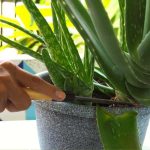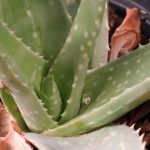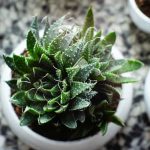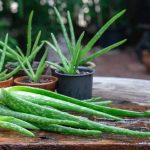Unsure about the water requirements of your aloe vera plant? Look no further! While aloe vera is not as thirsty as other succulents, it’s crucial to adhere to certain watering practices for optimal growth. Here, expert gardener Emily Horn provides insights on the appropriate watering frequency and quantity for your aloe vera plant.
Aloe vera, a beloved household plant, has simple care requirements. With the right light exposure, soil quality, and potting conditions, your aloe can prosper on its own, with minimal attention from you – except for regular watering.
Water, an essential resource for all life forms, including aloe vera. Despite its importance, watering plants isn’t rocket science. An elderly farmer once bemusedly questioned the value of learning to water plants in college. However, the underlying truth is that even seasoned farmers like Harold understand the significance of proper watering techniques.
Let’s delve into the correct way to hydrate your aloe vera plant and the recommended watering schedule. Over-watering and under-watering are common issues faced by aloe vera owners, underscoring the importance of mastering the art of watering. Factors such as light exposure, temperature, soil composition, and seasonal variations can influence the watering needs of your plant.
Brief Watering Tips
Several variables affect the frequency of watering. Regardless of environmental conditions, it is advisable to assess your aloe plant weekly for moisture levels. Typically, aim to water your aloe every three weeks, reducing frequency in winter. Conduct a simple soil moisture check by feeling the soil with your finger. When watering, ensure thorough saturation, allowing excess water to drain from the pot’s base.
In-Depth Insights
Aloe vera, a renowned succulent originating from the Mediterranean region, has been referenced in ancient texts from civilizations like Egypt, Greece, and Rome, as well as in religious texts like The Bible. Its adaptation to arid environments in regions like Israel and Egypt highlights its resilience.
The arid, sandy soils and sporadic rainfall in these regions create an ideal habitat for aloe plants. With an average height of 2 feet, aloes benefit from sheltering by taller plants, mitigating intense sunlight exposure.
Significance of Water in Plant Life
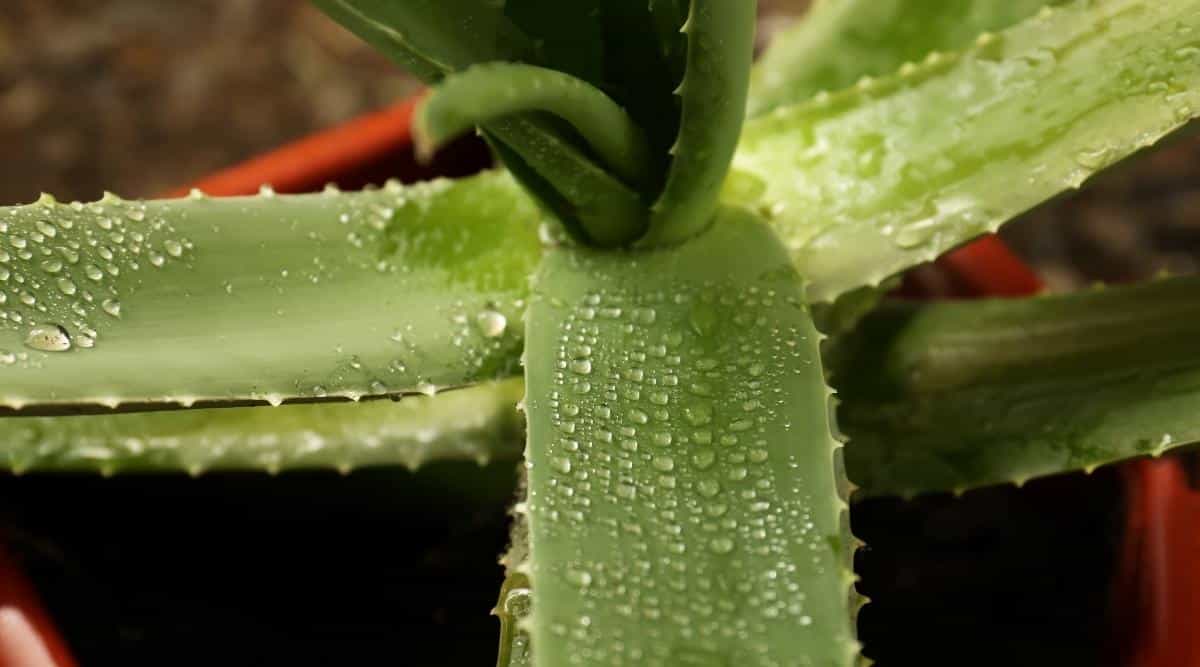

Water is fundamental for the survival of all organisms, plants included. It plays a vital role in photosynthesis, the process by which plants produce their sustenance.
Essentially, water and sunlight combine within the leaf’s cells to synthesize glucose and oxygen. Glucose serves as a primary energy source for plants, while oxygen is released into the atmosphere, supporting aerobic life forms.
Aloe vera and other succulents have evolved unique mechanisms for photosynthesis, requiring less water than traditional plants. To adapt to infrequent rainfall, aloe plants excel at water retention to sustain themselves.
Unlike non-desert plants that lose water through leaf pores during transpiration, aloe vera’s thick, waxy leaves minimize such water loss. This adaptation helps aloe plants thrive in desert conditions where daytime heat poses a desiccation risk.
Characterized by a rosette shape, aloe vera’s leaves are closely arranged, further reducing water loss due to their compact configuration and protective waxy surface.
Understanding the plant’s biology sheds light on its water needs. Appreciating aloe’s water storage capabilities explains why this succulent doesn’t require frequent watering.
Factors Influencing Watering Frequency
In light of aloe’s adeptness at retaining water, external environmental factors also dictate watering frequency for these plants.
Comprehending these variables is essential for effective watering practices to prevent issues such as leaf wilting and plant stress caused by inadequate or excessive watering.
Impact of Light Exposure
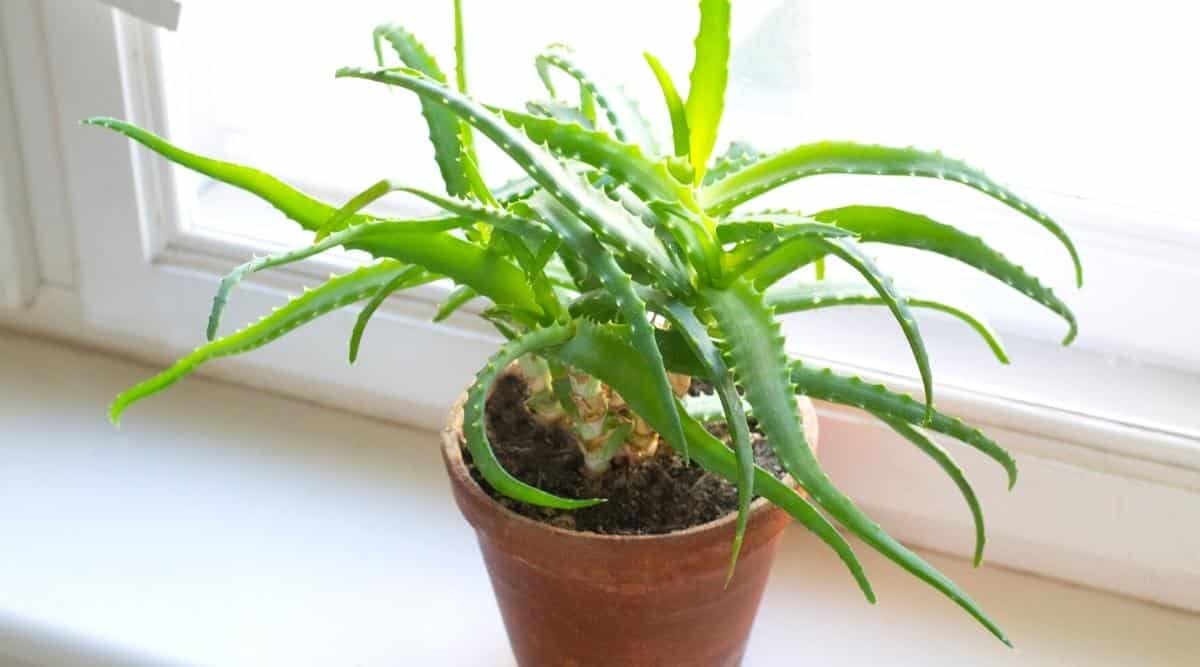

The intensity of light exposure directly influences the watering needs of your aloe plant. Aloes situated in bright, indirect light demand more water than those in dimly lit or shaded areas. Increased light exposure enhances photosynthesis, necessitating more frequent watering.
Effect of Temperature


Room temperature impacts the watering frequency of your aloe vera. In warmer environments, your plant will require more frequent hydration to compensate for increased transpiration rates.
When it comes to watering your aloe plant, the temperatures will play a significant role in determining its watering needs. Warmer temperatures will require more frequent watering, while cooler temperatures will result in less frequent watering. During the summer months, if you decide to move your aloe plant outdoors, you must consider the impact of the warmer outdoor temperatures and the increased sunlight intensity. Under these conditions, you’ll need to monitor your aloe plant more closely for watering needs. Aloe plants thrive in well-drained, sandy soils. It’s advisable to either purchase a commercial succulent mix or create your own soilless mix using a combination of inorganic items like sand, pumice, and perlite. This mix increases the soil’s pore space, improving drainage and reducing the risk of waterlogging. The type of container you use for your aloe plant also affects its watering requirements. Containers made of materials like terracotta and unglazed clay will dry out the soil faster than plastic pots. Ensure that your container has proper drainage holes to prevent overwatering, which can lead to root rot and potentially kill your plant. Dormancy is a natural phase for aloe plants, often triggered by intense light and high temperatures. During dormancy, the plant requires less water as it conserves energy. It’s crucial not to overwater your aloe during this period to avoid issues like root rot. Look for signs of new growth or flowering, indicating the end of dormancy and the need to resume regular watering. In conclusion, understanding how temperature, soil type, container choice, and dormancy impact your aloe plant’s watering needs is essential for its health and longevity. By carefully monitoring these factors, you can ensure your aloe thrives in its environment.When it comes to coaxing an aloe vera plant to bloom indoors, it can be quite challenging but not entirely unattainable. Factors such as plant age, size, and light exposure play pivotal roles in determining flower development. Typically, older aloe plants thrive in bright, indirect light conditions and are more likely to produce blossoms. In some cases, a plant placed in a slightly undersized pot may trigger flowering as a response to stress. While dramatic, this flower production is the aloe’s way of ensuring its survival for future generations, even though it’s not in any real danger. Blooming commonly occurs after a period of dormancy, so keep an eye out for flower stalks emerging from the rosette during the fall and winter months.
Regarding the watering needs of your aloe plant, there isn’t a definitive answer as various factors influence the watering frequency. To gauge when to water, always check the soil moisture level before proceeding. If the soil is dry, provide a thorough watering, allowing the excess water to drain out from the bottom of the pot through the drainage holes.
Final Thoughts
Considering the ideal conditions for your aloe vera plant, it thrives best in bright, indirect sunlight rather than shade. Aim for at least 6 hours of indirect sunlight daily to maintain a healthy plant structure and prevent stem elongation due to insufficient light exposure.
Temperature-wise, aloe plants prefer a range between the upper 70s to lower 80s Fahrenheit, tolerating variations between 50 and 85 degrees Fahrenheit well. Extreme temperatures can negatively impact the plant, leading to issues like leaf discoloration and excessive water loss. Ensure your aloe is shielded from drafts and abrupt temperature changes, especially during winter, to avoid any stress or damage to the plant.



